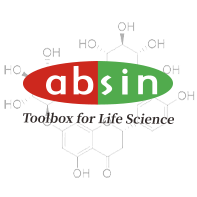Product Details
Product Details
Product Specification
| Usage | Self-provided consumables and equipment: 1 ml pipette 100-200 μl pipette Rotary socket mixer Flow cytometry PBS 75% ethanol Applicable experiment and operation process: 1. Cell preparation Adherent cells: Discard the cell culture medium, digest with trypsin, prepare a single cell suspension, centrifuge at 1000 rpm for 5 minutes, and discard the supernatant. The pellet was resuspended with 1 ml of pre-cooled PBS. Centrifuge again at 1000 rpm for 5 minutes and discard the supernatant. Suspended cells: The cell suspension was collected, centrifuged at 1000 rpm for 5 minutes, and the supernatant was discarded. The pellet was resuspended with 1 ml of pre-cooled PBS. Centrifuge again at 1000 rpm for 5 minutes and discard the supernatant. Histiocytes: After cutting the tissue pieces into the smallest possible pieces with scissors, digested with 0.25% trypsin for 0.5-1 hour. Filtering through a 200-400 mesh screen to obtain a single cell suspension. Centrifuge at 1000 rpm for 5 minutes, discard the supernatant, and resuspend the pellet with 1 ml of pre-cooled PBS. Centrifuge again at 1000 rpm for 5 minutes and discard the supernatant. Note that for the last centrifugation, discard the supernatant and leave 50 μl of the supernatant, vortex and mix well. 2. Cell fixation The cell pellet is gently mixed with 1 ml-20 °C pre-cooled 75% ethanol, and fixed at 4 °C for more than 2 hours or overnight. Then, centrifuge at 1000 rpm for 5 minutes, gently discard the supernatant, resuspend the pellet with 1 ml of pre-cooled PBS, centrifuge at 1000 rpm for 5 minutes, discard the supernatant. 3. Staining PI staining working solution configuration: Add 25μl PI staining solution (solution A) and 10μl RNase A (solution B) to 0.5 ml staining buffer solution (solution C), mix well and set aside. Add 0.5 ml of the prepared PI staining working solution to each cell sample, and gently mix and resuspend the cells. Incubate at 37 ℃ for 30 minutes in the dark from light, and detect directly by flow cytometry (it is preferable to complete within 5 hours). The excitation wavelength was 488 nm and red fluorescence was detected. Note: Not more than 1 × 10 cells per test6One. |
||||||||||||
| Beilstein | 0 | ||||||||||||
| Synonym | Cell cycle and apoptosis detection kit | ||||||||||||
| Description |
This product is based on Propidium iodide (PI) staining method to analyze cell cycle and apoptosis. Propidium iodide is a double-stranded DNA dye. Its intercalation in double-stranded DNA can produce fluorescence. The intensity of fluorescence is directly proportional to the amount of double-stranded DNA.
|
||||||||||||
| PubChem CID | 0 | ||||||||||||
| General Notes | 1. PI is toxic. Pay attention to protection during operation, protect eyes, avoid inhalation, and wear disposable gloves. 2. PI has quenching phenomenon, so avoid light during storage and use. |
||||||||||||
| Storage Temp. | Store at-20 ℃ in the dark from light, shelf life is 12 months. | ||||||||||||
| Applications | This product is used for the detection of cultured adherent cells or suspended cells, and can also be used for the detection of tissue cells. |


